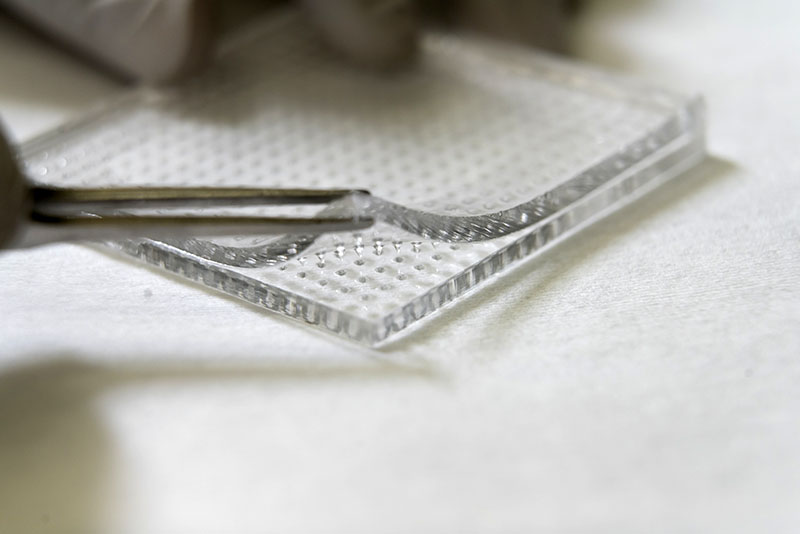
A Purdue University engineer’s patent-pending invention could improve the quality of life for millions of people suffering from diabetic foot ulcers.
Rahim Rahimi, an assistant professor in the School of Materials Engineering, has developed a flexible polymer composite microneedle array that can overcome the physicochemical bacterial biofilm present in chronic, nonhealing wounds and deliver both oxygen and bactericidal agents simultaneously. The results have been published in ACS Applied Bio Materials.
“The biofilm acts as a shield, hindering antibiotics from reaching infected cells and tissues,” Rahimi said. “When these microneedles pierce through the shield, they absorb the fluid underneath and dissolve, which delivers the antibiotic directly to the ulcerated cells and tissues.”
Rahimi said the traditional method to bypass biofilm is for physicians to peel it off, which is painful to patients and doesn’t discriminate unhealthy tissue from healthy tissue.
“The microneedles don’t cause pain because they are not long enough to touch nerve endings in the foot,” he said. “In this published study, the team assessed the microneedles on ex vivo porcine wound models. In fewer than five minutes, the microneedles dissolved, the antibiotic was delivered and the patch was removed.”
The lack of proper treatment of infected ulcers can lead to bacteremia and sepsis. As a result, chronic wounds are one of the key causes of limb amputations.
The next step to developing the microneedles beyond the proof-of-concept stage is to find partners to conduct human tests. Rahimi has disclosed the innovation to the Purdue Research Foundation Office of Technology Commercialization. OTC has filed a patent application on the intellectual property. The innovation is available for licensing. https://www.purdue.edu/newsroom/releases/2021/Q3/purdue-microneedles-pierce-biofilm-for-more-effective-topical-delivery-of-antibiotics-to-infected-wounds.html








Recent Comments